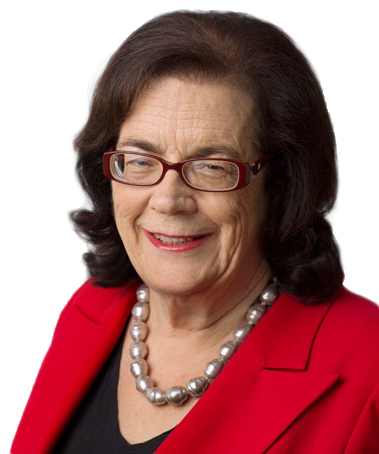
There is a way forward to tackle indigenous disadvantage after referendum defeat, writes political columnist MICHELLE GRATTAN.
AMID the bitter blame game following the rout of the government’s Voice referendum, there’s mostly agreement on one point. Australia must address more effectively the appalling disadvantage suffered by many of its indigenous citizens.

To state the obvious, this is easy to say but has proved nearly impossible up to now. Poverty, intergenerational trauma, remoteness and many other factors combine into intractable vicious circles.
But – while you’d hardly know it from what politicians and commentators have said during the fractious Voice debate – there is a structure in place that could be used in this post-referendum phase.
The 2020 National Agreement on Closing the Gap, forged between federal and state governments and the Coalition of Aboriginal and Torres Strait Islander Peak Organisations, provides for shared decision-making through partnerships.
The agreement has so far fallen far short of its potential.
A damning draft Productivity Commission report earlier this year highlighted failures in its implementation, mainly because the bureaucracy wasn’t properly on board. The report asked whether “governments have fully grasped the scale of change required to their systems, operations and ways of working to deliver the unprecedented shift they have committed to”.
The Albanese government has talked minimally about the agreement, presumably because it wanted to emphasise a current lack of voice rather than highlighting what was there already. Or perhaps it just wasn’t keen on something the Morrison government had set up.
Surely now is the time to put more effort into this agreement and to shake up the relevant bureaucratic structures. These include the National Indigenous Australians Agency, located in the Prime Minister’s Department, which has a central role in policy design and implementation and advises the PM and the Minister for Indigenous Australians, Linda Burney. Critics say it needs reform.
In the days ahead the government needs to engage more intensively with the Coalition of Peaks, which covers more than 80 indigenous bodies. Its lead convenor is longtime indigenous advocate Pat Turner, who has a wealth of experience in the public service. Turner is presently head of the National Aboriginal Community Controlled Health Organisation (NACCHO), which Health Minister Mark Butler strongly praised on Sunday.
Regardless of who is to blame for the referendum disaster – Anthony Albanese for going ahead with it, Peter Dutton for refusing to support it, other players, or everybody – the damage is now done. The necessary postmortems will be held, but analysing the politics after the event will do nothing for those people in remote communities and town camps where health is appalling, education inadequate, housing unsuitable, and jobs lacking or limited.
The chance of a constitutional Voice is gone forever. But those voices that do exist can be mobilised better for the indigenous good. That, however, will require new vigour from government, and regrouping from demoralised indigenous leaders who campaigned for “yes”.
Many of these leaders are so bruised and angry they’ll want to opt out. However understandable that may be, they, like the government, have an obligation to look to ways other than a constitutional Voice to help the lives of their people.
The government itself needs more firepower for Closing the Gap – to which Albanese has declared it remains committed. It should beef up its team in the indigenous area.
Burney has found the referendum campaign a massive strain. Patrick Dodson, the “father of reconciliation”, has serious health problems. Assistant Minister Malarndirri McCarthy performed well under an increasing load in the latter days of the campaign, but can’t be expected to carry much more.
One candidate who could bring special knowledge is Gordon Reid, who won the NSW coastal seat of Robertson from the Liberals at the election. Of indigenous heritage, Reid is a former emergency department doctor, a useful qualification when health is one of the biggest “gap” challenges. Another suitable candidate would be Marion Scrymgour, an indigenous woman who is a former deputy chief minister of the NT.
For Albanese, Saturday’s defeat is a huge personal disappointment as well as a political setback, although not necessarily one with serious future electoral consequences. For most voters, the Voice was not a first-order priority, and they will be judging the government on other things come election time.
But the issue has highlighted some of Albanese’s weaknesses. He was overconfident in his own ability to persuade people. We again saw he is not a great campaigner (evident at the election despite his victory). Not that even the best of campaigners could have won this one.
These past few weeks have also suggested Albanese will need to manage his energy better if he is to perform well for the long haul. Obviously he wanted to do all he could in the final days of the campaign. But tearing around the country, when it was clear the vote was lost, was excessive and left him looking exhausted. He would have been wiser in the final week simply to have gone to Uluru and left it at that, especially given the government needed to have more attention than it did on the Israel-Gaza crisis.
Albanese wants the government (and himself personally as prime minister) to be seen as never wasting a minute. But, taken to the extreme, this can be counterproductive for achievement and messaging.
Leaders are stronger and tougher than the rest of us. But they are not superhuman, and they need to pace themselves if they are not to wear out, lose focus, and become frazzled and tetchy. Albanese would have vivid memories of one Labor predecessor who ended up like that.![]()
Michelle Grattan, Professorial Fellow, University of Canberra. This article is republished from The Conversation.
Who can be trusted?
In a world of spin and confusion, there’s never been a more important time to support independent journalism in Canberra.
If you trust our work online and want to enforce the power of independent voices, I invite you to make a small contribution.
Every dollar of support is invested back into our journalism to help keep citynews.com.au strong and free.
Thank you,
Ian Meikle, editor




Leave a Reply